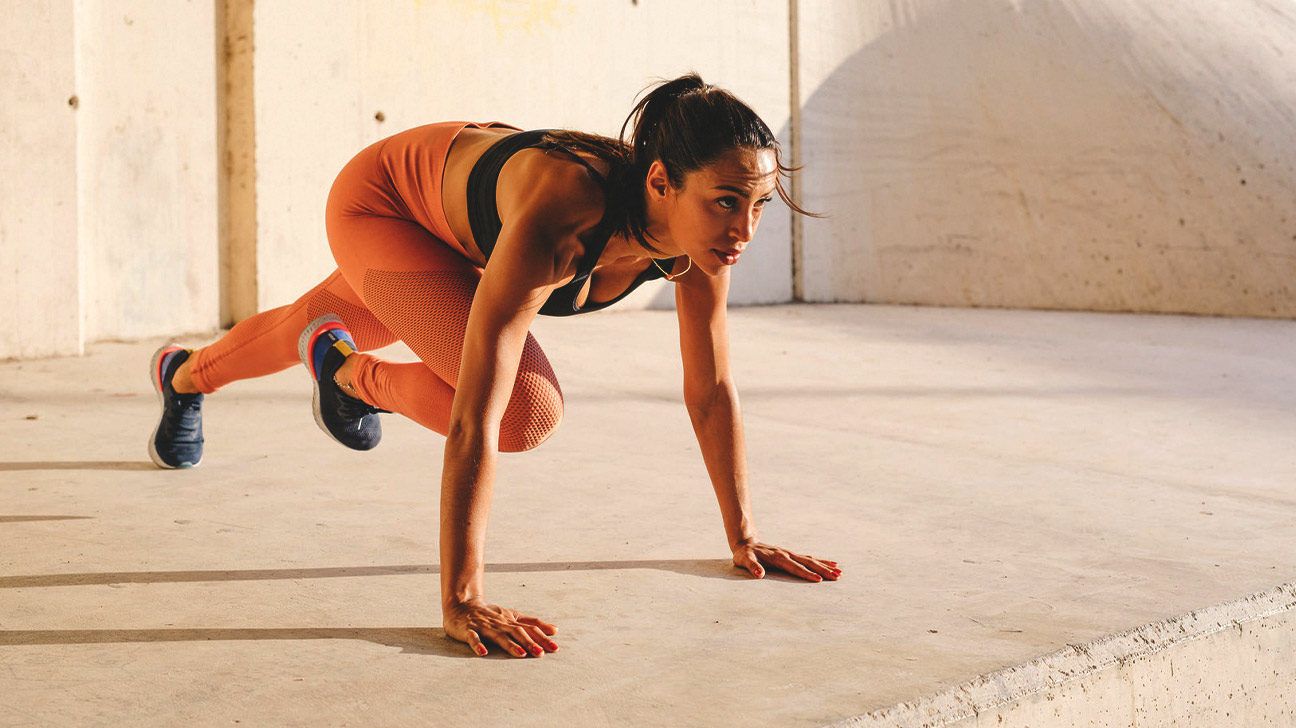Ahh, HIIT. It’s the workout everybody brags about doing, day in and day out, because they have #BodyGoals that they’re here to, er, hit.
HIIT, or high-intensity interval training, wasn’t meant to be done every day. And if you’re able to actually bust out that level of intensity five, six, or seven days per week, you’re likely doing it wrong.
We know — it’s not what you want to hear.
But these super-quick routines were created so you could perform your chosen form of cardio at maximum effort, says Joey Thurman, certified personal trainer and author of “365 Health and Fitness Hacks That Could Save Your Life.”
“The idea is to elevate your heart rate for a brief period, followed by resting for a given period,” Thurman explains. “You can train in a 1:1 work-to-rest ratio (sprint for 30 seconds, rest for 30), a 1:2 ratio (sprint for 30 seconds, rest for 1 minute), a 1:3 ratio (sprint for 30 seconds, rest for 1.5 minutes), and so forth.”
The key, he says, is to go at your maximum effort during the sprints.
A lot of studies that show the benefits of extremely intense, short bouts of exercise are a result of people working at their give-it-all-you-got effort, says Dalton Wong, certified personal trainer and author of “The Feelgood Plan: Happier, Healthier & Slimmer in 15 Minutes a Day.”
“True HIIT is like sprinting, and it should make you feel like your gas tank is completely empty,” Wong says. So if you’re doing a 30-second sprint during a HIIT interval, you shouldn’t be able to get to second 31 without wanting to collapse.
Which means that if you’re able to go for even one second longer — or pencil in another HIIT session tomorrow — you probably didn’t go hard enough. We hate to be so blunt, but that’s the truth.
Most people aren’t used to pushing themselves as hard as is necessary for HIIT, especially for a HIIT workout that’s as short as 7 or 10 minutes, because it’s extremely uncomfortable.
We all want the fastest, most efficient way to get in shape so we can do other awesome things with our lives. So the idea of being able to work out for such a short amount of time and get results, rather than slogging away on the treadmill for a longer time, sounds like a no-brainer.
The first benefit everyone talks about is, of course, the fat burning. “Research shows that intervals can repair your metabolism by reducing inflammation, forcing the body to improve its ability to use and burn energy,” says Thurman.
This means you’ll burn fat at a faster rate, utilize energy better during workouts, and continue to burn calories long after your workout is done. This is a phenomenon known as EPOC, or excess post-exercise oxygen consumption.
Plus, you’ll simply be able to do more during those sweat sessions. “Think of it this way: If I were to have you sprint as far as you could for as long as you could, how long would you last? One minute, two minutes, three minutes?” asks Thurman.
“By adding rest periods and then going back [to the effort interval], it allows you to cumulatively sprint for a longer period of time. So, if you performed ten 30-second sprints, you’ll sprint for a total of five minutes. [That’s] much longer than anyone could sprint at once.”
And, when HIIT is done correctly (and paired with a solid nutrition plan), you can blast belly fat and improve heart health.
Glad you asked. The obvious risk is injury. Your risk of getting injured due to overtraining skyrockets when you don’t give your muscle tissue enough time to repair and grow, says Thurman.
“It falls along the same line of not working the same muscle group when lifting two days in a row — your body, joints, and mind will eventually wear out,” he says.
And don’t forget: Mental burnout is a real thing. “If you do too much HIIT, after a while your mind will start to lag behind,” says Thurman. “You’ll feel tired, fatigued, and not look forward to your workout. If you’re not mentally invested, your performance will suffer, as well as your form, and that can again lead to overuse and injury.”
Two to three days a week is a solid amount of HIIT, says Wong, as long as you build in 24 hours of rest and recovery between sessions.
So if your goal is to work out four times per week, he recommends two HIIT sessions and two resistance training sessions. Whether you go full-body on those resistance days or break it into an upper-body day and a lower-body day is up to you.
Keep your programming in mind: “If you do leg-intensive resistance training one day, then do HIIT sprints the next, your legs will be sore and not fully recovered for the HIIT,” says Thurman. “Try to schedule a rest day or yoga in between to allow optimal results.”
Basically, we’re not telling you not to do HIIT. We’re also not telling you to skip exercising on the reg. Fitting in some form of movement each day is good for both your physical and mental health — that’s something all the experts agree on.
But if you’ve maxed out your three-times-a-week HIIT sessions or are just phoning it in, schedule a yoga class or hop on the bike for a casual ride in the sunshine. You’ve earned it.


